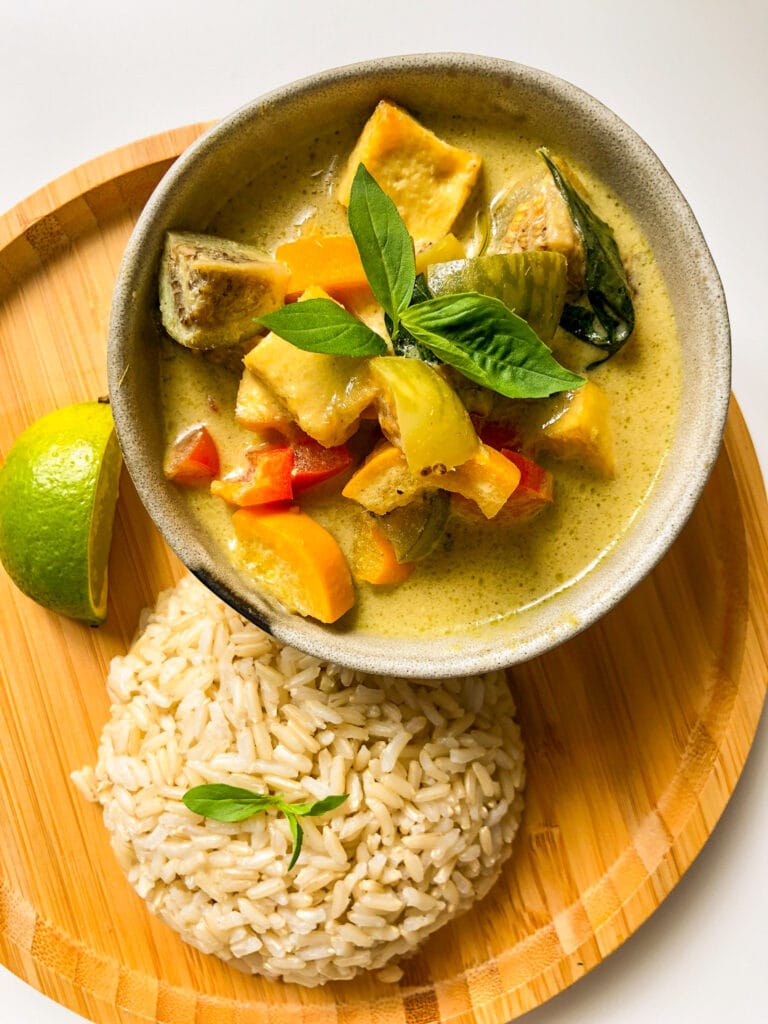
Vegan Thai Green Curry
This Vegan Thai Green Curry is vibrant, aromatic, and deeply comforting. As soon as the homemade curry paste hits the pan, your kitchen fills with irresistible Thai-inspired aromas.
Surprisingly easy to make, it’s gluten-free, sugar-free, refined salt-free, and oil-free—yet bursting with fresh herbs and bold flavours. One taste of this homemade paste, and you’ll never look back.
Prep
15 mins
Cook
20 mins
Total
35 mins
Serves
2-3 ppl
Ingredients:
Green Curry Paste:
- 1/3 cup of home made vegan green curry paste (make in advance)
Green Curry:
1 can of full fat Coconut Milk
1 Tbsp of Soya sauce or Tamari (for gluten free)
1 tsp of Miso paste
1 cup of Vegetable Stock (unsalted)
10 Kaffir Lime Leaves
1 small Courgette
4 Thai Aubergines
1 red Pepper
1 cup of extra firm Tofu cut in cubes
Finishing / Garnish:
1 cup of Thai basil leaves kept whole
Freshly squeezed Lime juice (if needed)
Red Chilli peppers sliced (optional)
Cooked Jasmin brown rice to serve
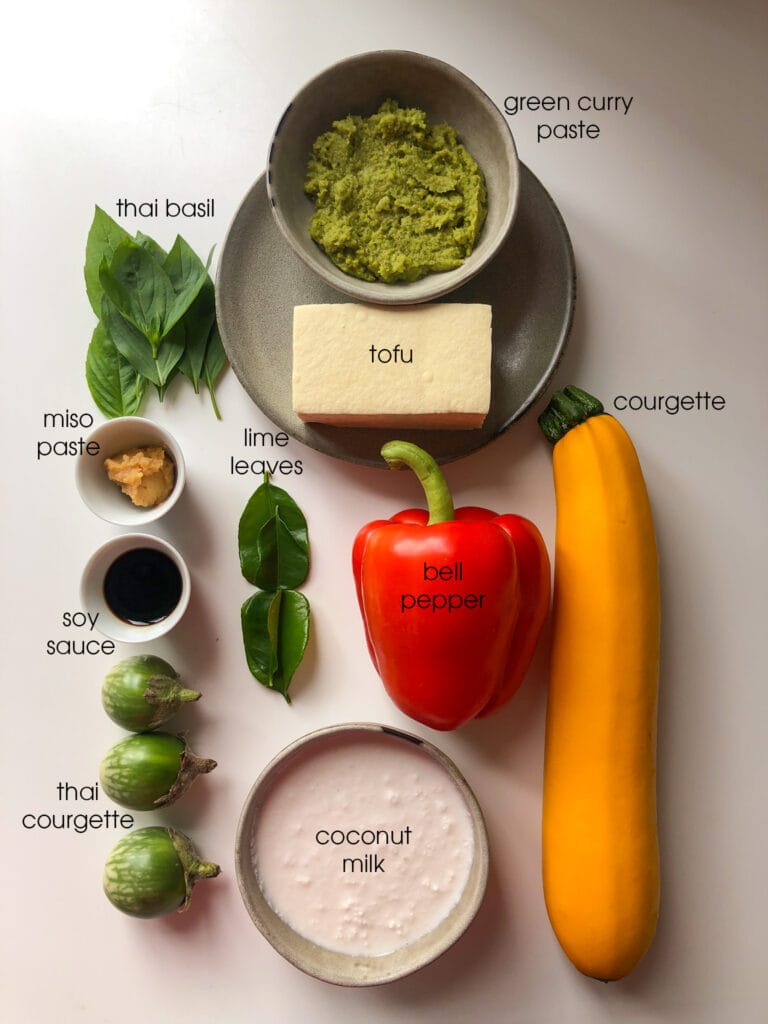
About this recipe
I absolutely love Asian food, but Thai food is my favorite. I’ve been making my own curry paste at home for years, trying out all kinds of recipes with different ingredients. A few months ago, we spent three amazing weeks in Thailand, soaking up the culture, nature, temples, and, of course, the food! We did a fantastic cooking class with Asia Scenic, and I’m forever grateful to Moon for sharing her passion and knowledge of Thai home cooking. It was eye-opening to taste all the ingredients first and learn why each one matters. It’s completely changed the way I cook, especially Thai food.
Thai cuisine has so much variety—we never had the same Green Curry twice while we were there. It changes depending on the region, and every family has their own twist. This recipe is my vegan take on traditional Thai Green Curry paste, and I’m so excited to share it with you! It might look like a long list of ingredients, but it’s actually easy to put together. Some ingredients may require a trip to a Thai supermarket, but I promise it’s worth it. You’ll never want to buy store-bought curry paste again! Plus, you can freeze it for quick, delicious weeknight meals.
Instructions step by step:
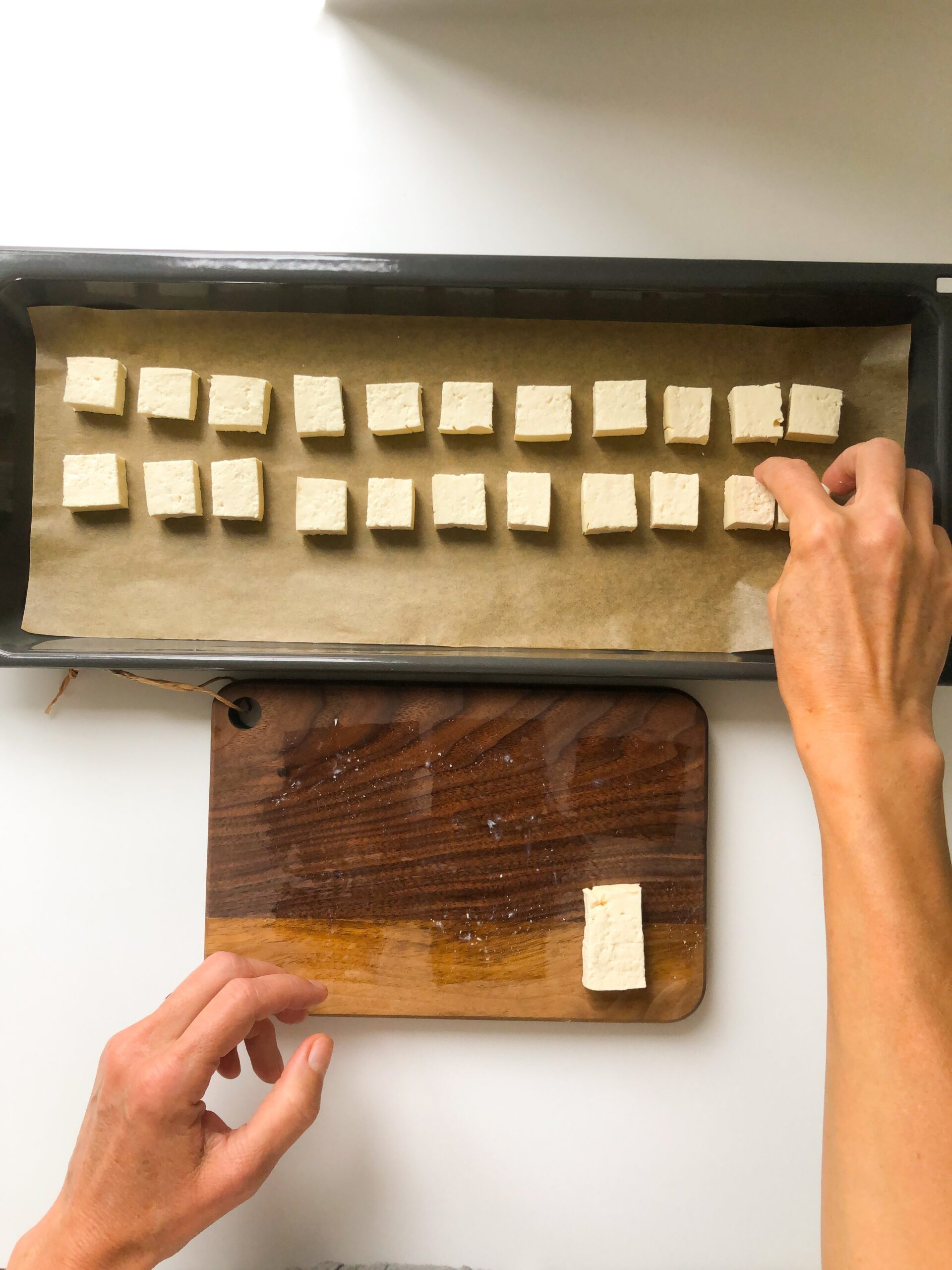
Step 1 – Preheat your oven to 180°C (350°F). While it heats, take a block of firm tofu and press it gently between kitchen towels to remove any excess moisture. Once the tofu is pressed, slice it into 2cm cubes. Arrange the tofu cubes evenly on a baking tray lined with parchment paper to prevent sticking. Bake for 25 minutes, or until golden and crispy.

Step 2 – Start by slicing your chosen vegetables into bite-sized pieces for easy cooking and eating. If you’re using Thai aubergines, be sure to keep them in a bowl of water until you’re ready to cook. This helps prevent them from browning and keeps their texture fresh.

Step 3 – Heat a medium Dutch oven or wok over medium-high heat. Once hot add about 1/2 cup of the coconut milk. Let it bubble and sizzle and cook for 2 mins until some water evaporates and you get a more creamy texture.
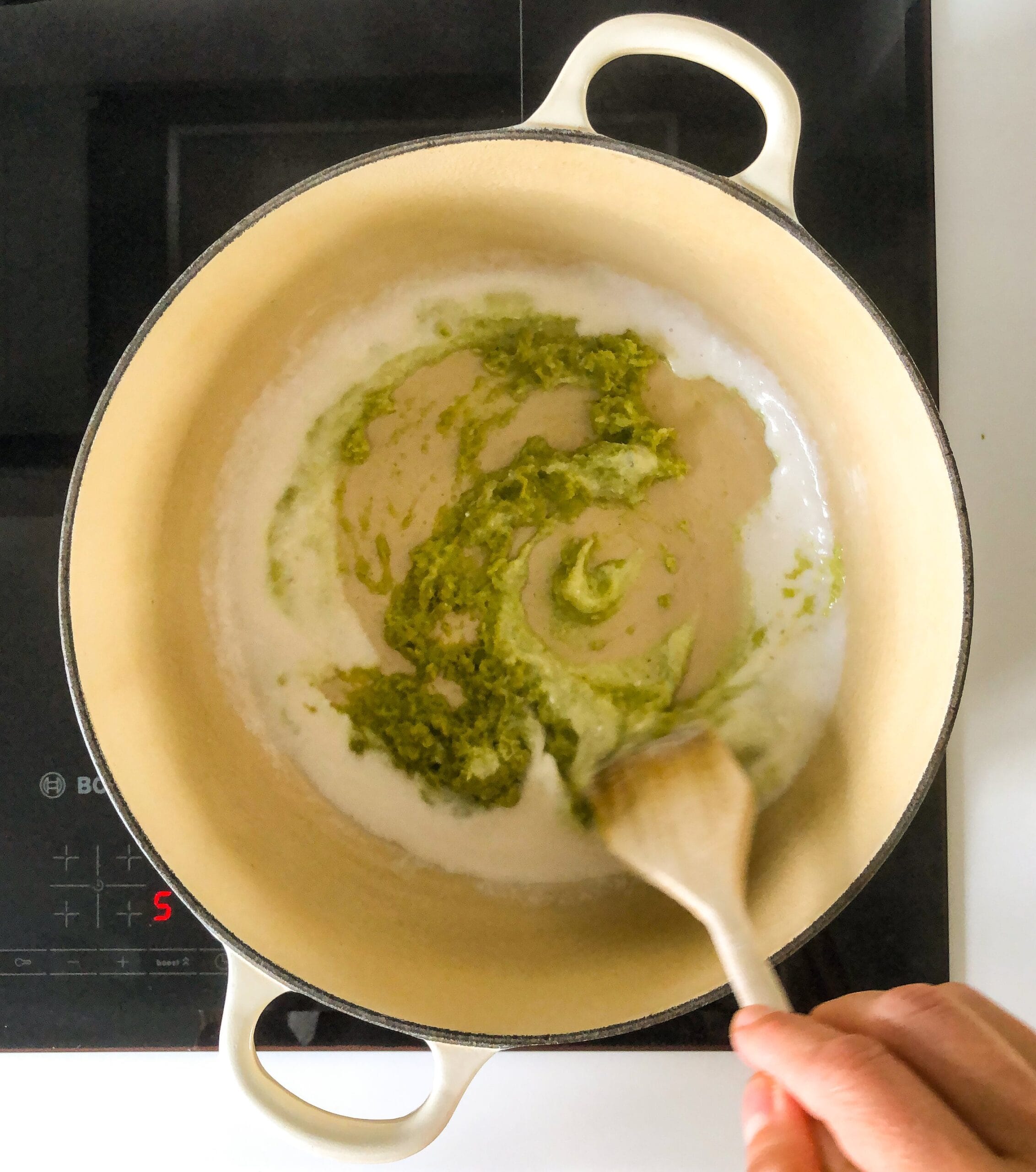
Step 4 – Add the curry paste and mix it well to combine. Keep stirring frequently and let it cook for 2-3 minutes until it starts to dry out a bit.

Step 5 – Stir in the Miso paste and Soya sauce
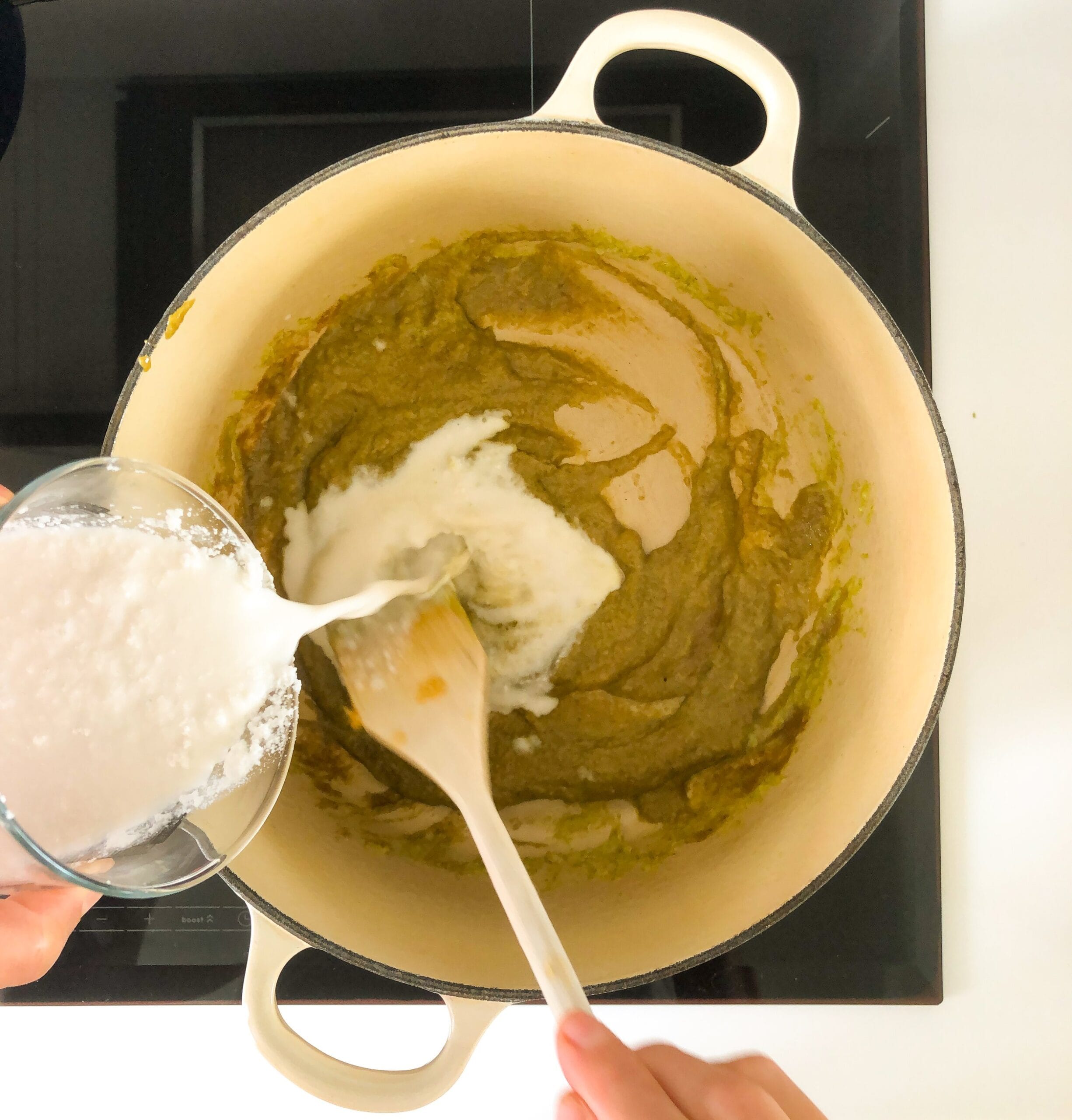
Step 6 – Pour in the remaining Coconut Milk and combine to incorporate everything. Bring to a simmer and cook for 4-5 minutes or until it just starts to thicken.
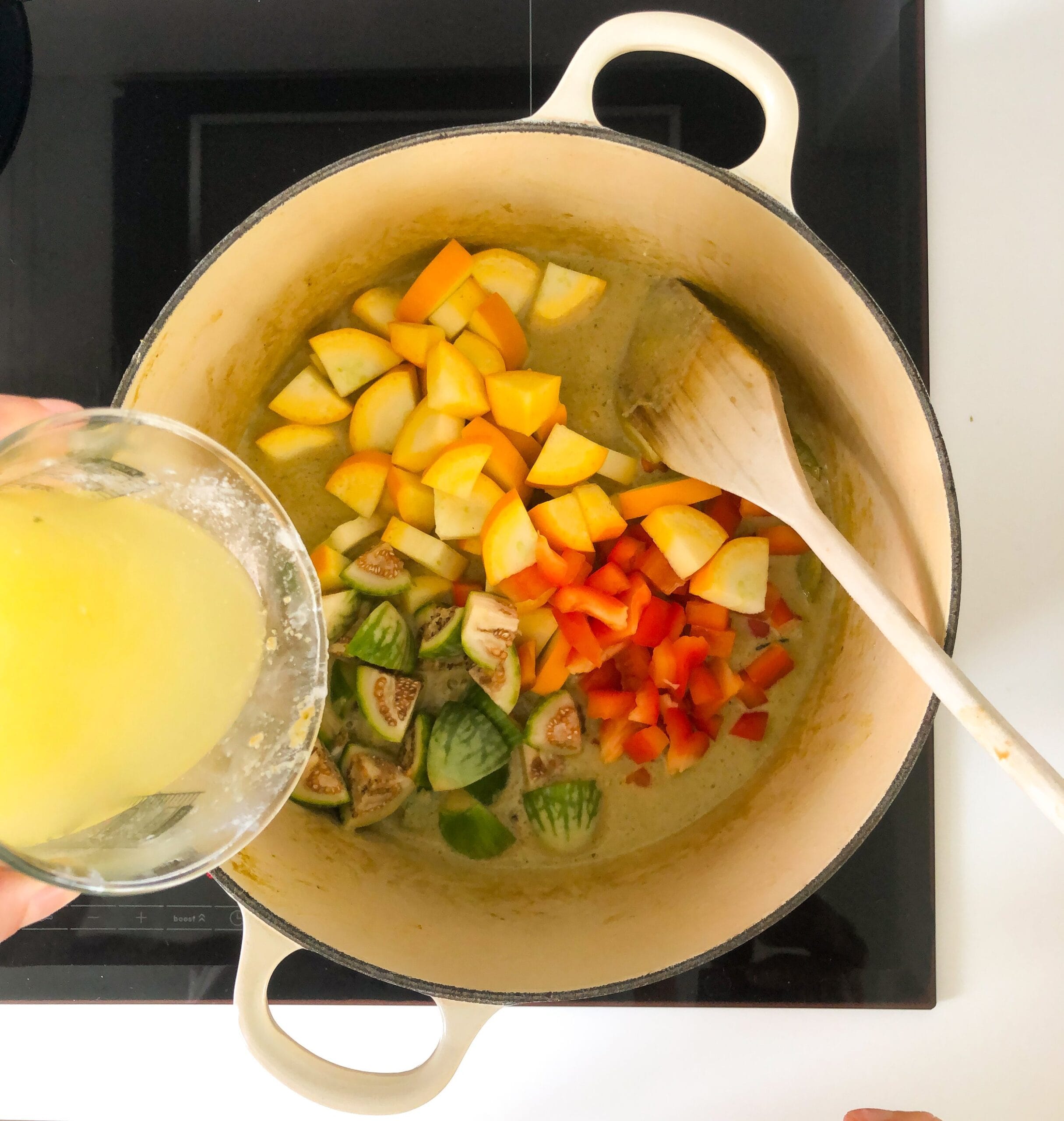
Step 7 – Add your vegetables of choice, vegetable stock and torn Kaffir Lime leaves. Stir to submerge the vegetables. Partially cover the pan and bring to a simmer then cook for 2 minutes.
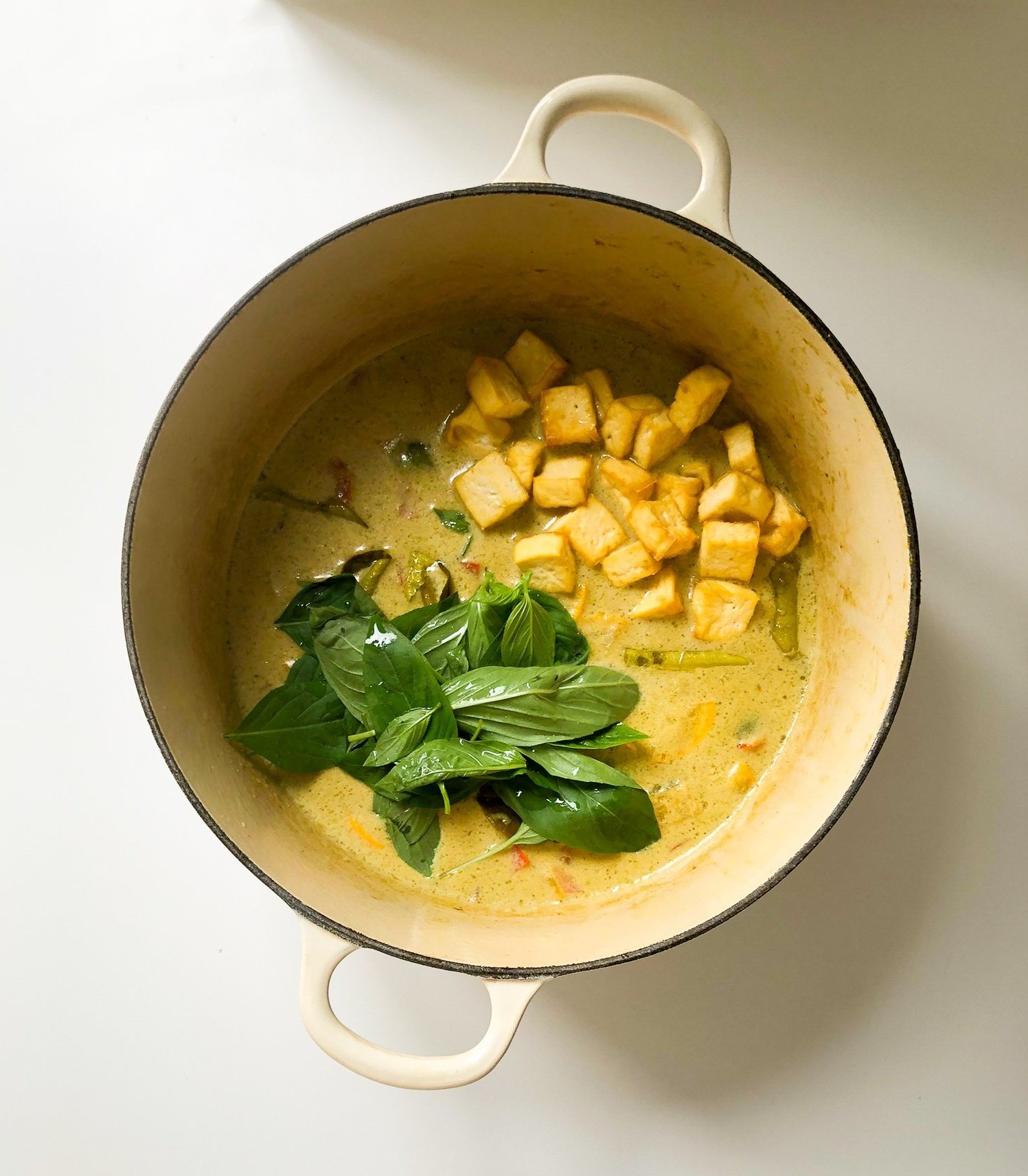
Step 8 – Take away the lid and let the curry simmer for another 4 to 5 mins to create a creamy and thick texture . Turn off the heat, stir in the baked Tofu and Thai Basil leaves. Taste and add a squeeze of lime juice if needed.

Step 9 – Serve with brown Basmati Rice, a few leaves of Thai Basil, red Chilli slice if using and a slice of Lime.
About these Ingredients:
Full-Fat Coconut Milk: A must for that classic Thai curry richness! Full-fat works best here since we’re skipping oil—it brings everything together, softens the heat from the paste, and gives you that dreamy, creamy texture we all love.
Soya sauce or Tamari: This adds a savoury depth of flavour and replaces the more traditionally used fish sauce. It is our main source of saltiness and umami. If you are gluten free use Tamari instead.
Thai Basil Leaves: Thai basil has a bold, slightly spicy flavour with hints of anise and sweetness—much punchier than regular basil. You can swap it with sweet basil, but the flavour will be milder and less intense. Either way, it adds a lovely herbal kick to your curry!
Kaffir Lime Leaves: These are the star of any Thai green Curry and my favourite herb. I use them in many dishes, not only traditional Thai. I’m using a bit more than most recipes call for as I just adore the fragrant taste and smell they give. I normally get them fresh and freeze the remainder. This way, I always have them available in my kitchen. You can’t substitute Kaffir Lime leaves I’m afraid.
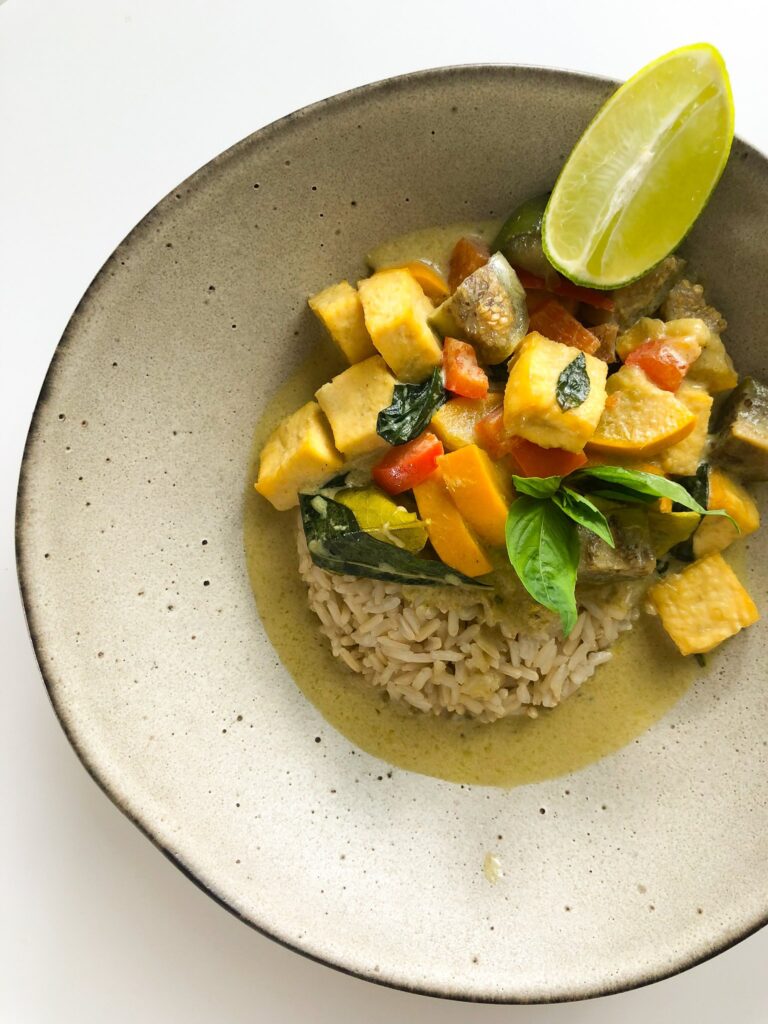
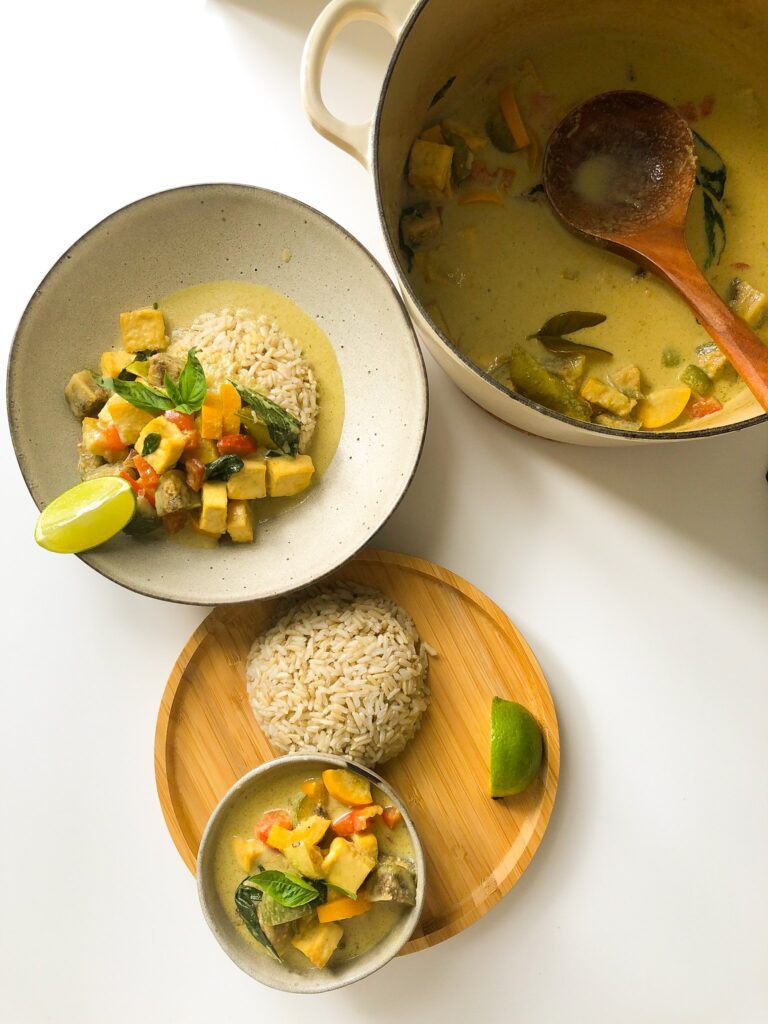
Vegetable Stock: Homemade stock is the best but not always around so try to get a good quality one if you can. Alternatively, you can use filtered water but it will loose some depth of flavour and result in a more watery curry.
Miso Paste: Like Soya sauce, Miso paste adds depth of flavour and another dimension of umami, saltiness, and slight sweetness due to its fermentation. The richness of miso paste elevates this curry without the need for salt.
Courgette, Aubergine & Red Pepper: Traditional Thai curry uses Thai aubergines and bamboo shoots, but seasonal veg works just as well. I love mixing colours—yellow courgettes and red peppers add brightness, texture, and a cheerful vibe to the dish!
Extra-Firm Tofu: Thai green curry usually includes a protein, and here I’ve gone with tofu. I like to bake it for better texture and flavour, but if you’re short on time, you can skip that step or add it straight in. Softer tofu works too—it just tends to break up more. Bonus: tofu’s packed with vitamins like B1, B2, B6, E, and folate!
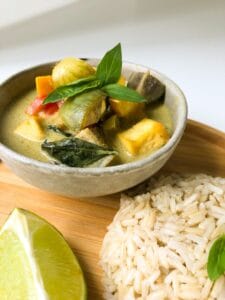
Vegan Thai Green Curry
Marisa MarquesEquipment
- 1 Pot
Ingredients
Green Curry Paste
- 1/3 cup home made vegan green curry paste (make in advance)
Green Curry
- 1 can full fat Coconut Milk
- 1 Tbsp Soya sauce or Tamari (for gluten free)
- 1 tsp Miso paste
- 1 cup Vegetable Stock (unsalted)
- 10 Kaffir Lime Leaves
- 1 Courgette
- 4 Thai Aubergines
- 1 Red Pepper
- 1 cup extra firm Tofu cut in cubes
Finishing / Garnish:
- 1 cup Thai basil leaves kept whole
- 1 Freshly squeezed Lime juice (if needed)
- 1 tsp Red Chilli peppers sliced (optional)
- 4 cups Cooked Jasmin brown rice to serve
Instructions
- Preheat your oven to 180°C (350°F). While it heats, take a block of firm tofu and press it gently between kitchen towels to remove any excess moisture. Once the tofu is pressed, slice it into 2cm cubes. Arrange the tofu cubes evenly on a baking tray lined with parchment paper to prevent sticking. Bake for 25 minutes, or until golden and crispy.
- Start by slicing your chosen vegetables into bite-sized pieces for easy cooking and eating. If you're using Thai aubergines, be sure to keep them in a bowl of water until you're ready to cook. This helps prevent them from browning and keeps their texture fresh.
- Heat a medium Dutch oven or wok over medium-high heat. Once hot add about 1/2 cup of the coconut milk. Let it bubble and sizzle and cook for 2 mins until some water evaporates and you get a more creamy texture.
- Add the curry paste and mix it well to combine. Keep stirring frequently and let it cook for 2-3 minutes until it starts to dry out a bit.
- Stir in the Miso paste and Soya sauce
- Pour in the remaining Coconut Milk and combine to incorporate everything. Bring to a simmer and cook for 4-5 minutes or until it just starts to thicken.
- Add your vegetables of choice, vegetable stock and torn Kaffir Lime leaves. Stir to submerge the vegetables. Partially cover the pan and bring to a simmer then cook for 2 minutes.
- Take away the lid and let the curry simmer for another 4 to 5 mins to create a creamy and thick texture . Turn off the heat, stir in the baked Tofu and Thai Basil leaves. Taste and add a squeeze of lime juice if needed.
- Serve with brown Basmati Rice, a few leaves of Thai Basil, red Chilli slice if using and a slice of Lime.
Notes
- protein pack |
- green curry |
- thai curry |
- vegan |
- courgette
Did you make this recipe?
Please tag us on @fromplantswithlovekitchen
There are no reviews yet. Be the first one to write one.
